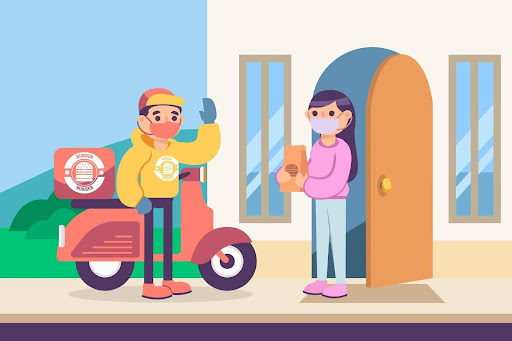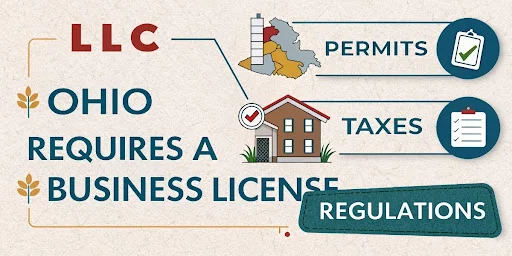How to Start a Successful Last-Mile Delivery Business in India?

India’s booming e-commerce and hyperlocal delivery sectors have created a massive demand for efficient last-mile logistics. From online marketplaces and grocery apps to direct-to-consumer brands, many businesses now rely on quick, reliable delivery services to reach their customers.
This growing demand presents a golden opportunity for entrepreneurs to start a last-mile delivery business, especially those willing to invest in the right tools, people, and processes. This guide will provide you with some helpful tips to get your own business off the ground.
What is a Last-Mile Delivery Business?
A last-mile delivery business handles the final leg of a product’s journey, from a distribution hub or local warehouse to the customer’s doorstep. It’s often the most time-sensitive and expensive part of the delivery process, yet critical for customer satisfaction.
In India, last-mile delivery covers everything from parcels and groceries to medicines and food orders. Businesses in this space can serve consumers directly or partner with larger logistics firms and e-commerce platforms as delivery service providers.
Tips to Start a Last-Mile Delivery Business in India
Once you understand how the last-mile ecosystem works, the next step is to build your business on a strong foundation. Here are the key steps to help you launch and grow a successful last-mile delivery venture in India.
1. Choose a Niche
Start by identifying a specific segment of the delivery market you want to serve. Choosing a niche helps you streamline your operations, target the right customers, and build expertise faster. Some common niches include:
- E-commerce parcel delivery
- Food and grocery delivery
- Pharmaceutical and medical supply delivery
- Furniture and bulky item delivery
- B2B courier services for small businesses
Select a niche that aligns with your local demand, delivery capabilities, and available resources. A well-defined niche not only helps you stand out in a competitive market but also makes it easier to find clients and scale sustainably.
2. Conduct Market Research
Before investing in vehicles or hiring drivers, it’s essential to understand the dynamics of your target market. Conducting thorough market research will help you assess demand, identify competitors, and spot service gaps you can fill. Focus on factors like:
- Delivery demand in your chosen niche and region
- Customer expectations around delivery time, tracking, and communication
- Competitor pricing models and service quality
- Preferred delivery windows (e.g., same-day, next-day, time-slot based)
- Potential clients, such as local businesses, e-commerce platforms, or aggregators
Use a mix of online research, competitor analysis, and direct conversations with potential clients or drivers. The insights you gain here will shape your pricing strategy, service model, and go-to-market approach.
3. Create a Clear Business Plan
A well-structured business plan lays the groundwork for a successful and scalable last-mile delivery business. It acts as a roadmap that guides your operations, budgeting, marketing, and growth strategy. Your plan should include:
- Business Objectives: What do you aim to achieve in the first year? Three years?
- Target Market and Niche: Clearly define whom you are serving and how.
- Service Model: Will you operate independently, partner with aggregators, or provide third-party logistics?
- Pricing Strategy: Decide how you’ll charge- per delivery, per kilometre, or through subscription contracts.
- Operational Structure: Detail vehicle use, driver schedules, delivery coverage zones, and support systems.
- Marketing Approach: Outline how you’ll attract clients and differentiate yourself from competitors.
- Financial Projections: Estimate startup costs, recurring expenses, revenue streams, and break-even point.
A strong business plan also makes it easier to secure funding, if needed, and helps you monitor progress against your goals.
4. Consider All the Costs
Starting a last-mile delivery business involves more than just buying a vehicle and hiring a driver. To avoid cash flow issues later, it’s important to account for both initial investment and recurring operational costs. Key expenses to plan for include:
- Vehicle purchase or lease
- Driver salaries or partner commissions
- Fuel and toll charges
- Routine maintenance and repairs
- Commercial vehicle insurance (mandatory and critical for risk protection)
- Licences, permits, and taxes
- Technology tools (delivery apps, GPS tracking, etc.)
- Marketing and customer acquisition
Also, set aside a buffer for unexpected costs such as emergency repairs or delayed payments from clients. Budgeting realistically ensures smoother operations and better financial control from day one.
5. Register Your Business and Obtain Necessary Permits
To operate legally and build credibility, you must register your delivery business and secure the required licences and permits. This step also opens doors to financial services, partnerships, and government benefits. Key registrations and documents may include:
- Business registration as a sole proprietorship, partnership, or private limited company
- Goods and Services Tax (GST) registration (mandatory if turnover exceeds the threshold or if partnering with aggregators)
- UDYAM registration for MSME benefits
- Commercial driving licences for drivers
- Vehicle Fitness Certificate, Pollution Under Control (PUC) certificate, and road tax receipt
- Local municipal permits, if applicable, especially for intracity operations
Having all your documentation in place not only ensures compliance but also helps build trust with clients, especially when competing for B2B contracts.
6. Choose the Right Vehicle for Delivery Operations
The vehicle you choose directly affects your delivery capacity, operating costs, and service efficiency. Selecting the right type of vehicle depends on the goods you plan to deliver, the routes you’ll cover, and your budget. Here’s what to consider:
- Load Capacity: Small commercial vehicles like the Tata Ace, Mahindra Supro, or Piaggio Ape are ideal for urban deliveries due to their compact size and decent payload.
- Fuel Efficiency: Opt for vehicles that offer high mileage or consider electric cargo vehicles for lower running costs and eco-friendliness.
- Ease of Maintenance: Choose models known for reliability, low maintenance costs, and easy availability of service centres and spare parts.
- Leasing vs Owning: If you are just starting out, leasing may reduce upfront investment, while ownership could be more economical long-term.
Investing in the right vehicle ensures smoother operations, reduces downtime, and allows you to serve your delivery zone more effectively.
7. Hire and Train Reliable Drivers
Drivers are the face of your last-mile delivery business. Choosing the right people and training them well can make a huge difference in customer satisfaction and delivery efficiency. Start by hiring drivers with valid commercial driving licences and a good understanding of local routes.
It’s important to verify their documents and background to ensure reliability. Once hired, invest time in training them in not just safe driving practices, but also in customer service, parcel handling, and using delivery apps or GPS systems.
Consider offering performance-based incentives to retain drivers and keep them motivated. A reliable and professional delivery team can reduce errors, speed up operations, and enhance your brand’s reputation.
8. Use Technology to Streamline Operations
Technology can dramatically improve the efficiency and accuracy of your last-mile delivery business. From managing orders to tracking vehicles in real-time, digital tools help reduce errors, optimise routes, and keep customers informed.
Start with a basic delivery management system to assign tasks, monitor deliveries, and generate performance reports. Use GPS tracking to monitor vehicle movements and suggest the fastest routes, saving both fuel and time.
Apps that offer proof of delivery (POD), digital payments, and customer notifications add a layer of professionalism and trust. Even if you begin small, adopting the right technology early on gives you a competitive edge and makes it easier to scale later.
9. Invest in Commercial Vehicle Insurance
Commercial vehicle insurance is not just a legal requirement but also a vital safeguard for your business. Your delivery vehicle is a key asset, and any damage, theft, or accident can disrupt operations and lead to significant financial loss.
Choose a comprehensive commercial vehicle insurance policy that covers:
- Own damage and third-party liability
- Theft, fire, and natural calamities
- Accidental damage to the vehicle
- Add-ons like zero depreciation cover, engine protection, roadside assistance, and personal accident cover for drivers
It’s equally important to choose a reliable insurer with strong service capabilities. For instance, Digit Insurance offers several benefits such as over 2,000 cashless network garages, 24×7 claim support, and a 96% claim settlement ratio for FY 2023-24.
The provider also offers the flexibility to customise your vehicle’s IDV, opt for broad coverage, and choose from a wide range of add-on options tailored to commercial use, making it a practical choice for delivery businesses.
By protecting your investment and reducing unexpected expenses, the right insurance plan ensures your business stays on track, even when faced with setbacks.
10. Find Clients
Securing reliable clients is essential for maintaining steady revenue in your last-mile delivery business. Start by reaching out to local retailers, e-commerce sellers, restaurants, pharmacies, and small businesses that need regular delivery support.
Offer competitive rates, flexibility in delivery schedules, and a commitment to on-time service. You can also list your business on local business directories, logistics aggregators, and digital platforms where companies look for delivery partners.
Networking through trade associations or local business events can help too. As you build a reputation for dependable service, satisfied clients may refer you to others, helping your business grow organically.
Starting a last-mile delivery business in India is a promising opportunity, especially in a market where quick and reliable delivery has become a necessity across sectors. With rising demand from e-commerce, grocery, pharma, and hyperlocal services, the scope for growth is significant.
However, success in this space depends on more than just owning a vehicle. You need a well-thought-out strategy that covers everything from choosing the right niche and hiring skilled drivers to leveraging technology and ensuring proper insurance coverage.
Paying attention to these foundational elements can help you run an efficient, profitable, and customer-focused delivery operation.

Top Reasons M3M The Line Offers High ROI for Commercial Investors

How to Start a Successful Last-Mile Delivery Business in India?

Braxons Group: Liquidity Protocols for RWA and Yield Strategies — Bridging Real Assets with DeFi

Accelerating drug discovery through the DEL-ML-CS approach

AI in Marketing Is No Longer a Buzzword — It’s the Strategy

Top Reasons M3M The Line Offers High ROI for Commercial Investors

How to Start a Successful Last-Mile Delivery Business in India?

Braxons Group: Liquidity Protocols for RWA and Yield Strategies — Bridging Real Assets with DeFi








